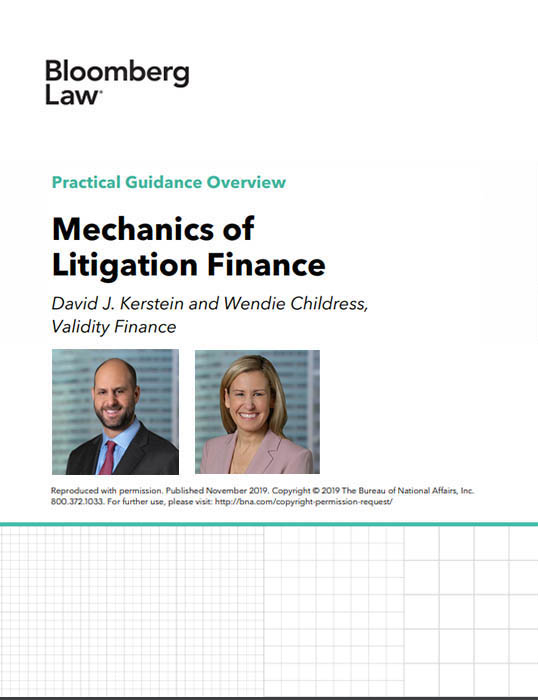November 18, 2019
Practical Guidance, November 2019
By David J Kerstein and Wendie Childress
Reprinted from Bloomberg Law Litigation Finance in Focus
Single-Case Financing
The majority of litigation funding in the United States is for individual plaintiff cases, also known as single-case financing. In fact, industry surveys estimate between 65-90 percent of active capital goes toward single-case financing. In this structure, a funder advances non-recourse capital to a claimant during the pendency of a case and then takes a return from the ultimate settlement or damages award in the case. In single-case financing, the claimant, not the law firm, is always the funding recipient.
Single-Case Financing
The majority of litigation funding in the United States is for individual plaintiff cases, also known as single-case financing. In fact, industry surveys estimate between 65-90 percent of active capital goes toward single-case financing. In this structure, a funder advances non-recourse capital to a claimant during the pendency of a case and then takes a return from the ultimate settlement or damages award in the case. In single-case financing, the claimant, not the law firm, is always the funding recipient.
Portfolio Financing
In some instances, a corporation or law firm will have multiple cases that they want to bundle into a “portfolio”. This can allow the corporation or law firm to take a larger amount of capital, cross collateralized against the bucket of bundled cases. If the cases in the portfolio are “diverse,” i.e., they don't rise or fall on the same set of facts or issues of law, this might allow the funder to offer better return terms to the corporation or law firm than they can traditionally offer in a single case funding because of the lower risk profile for the funder.
Common Features of Litigation Finance Transactions
Although each litigation finance deal is negotiated individually, they tend to have several common features.... Download the full article to find out more.
